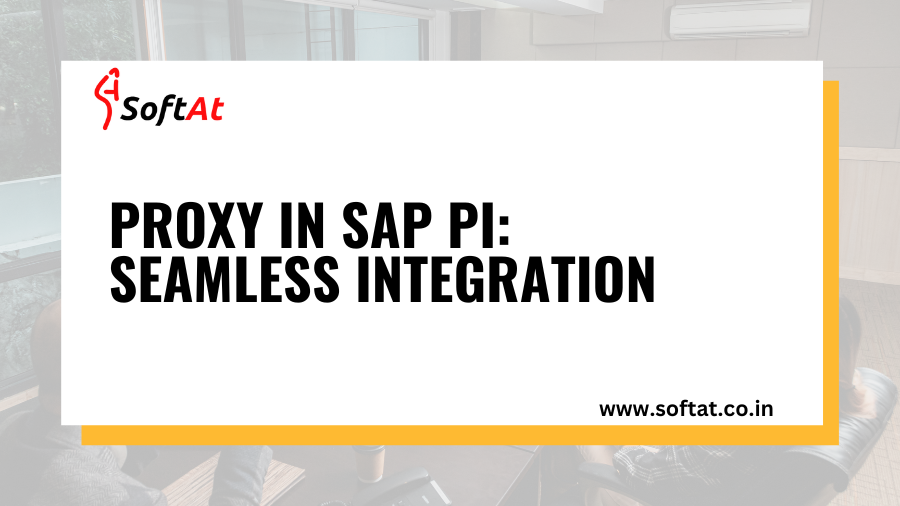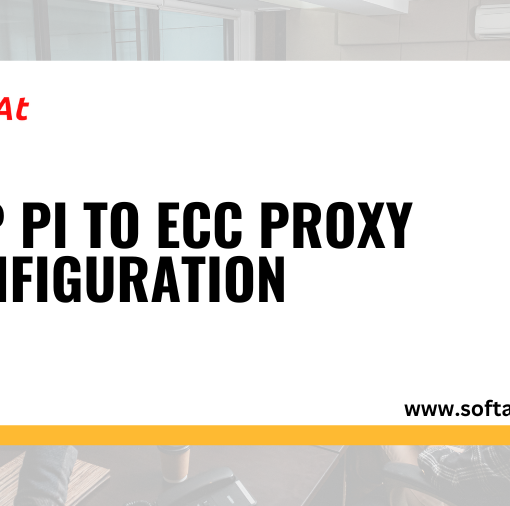In the intricate realm of enterprise application landscapes, seamless communication and data exchange play a pivotal role in ensuring smooth operations and fostering business agility. Enter the Proxy In SAP PI, a versatile tool nestled within SAP Process Integration (PI) that serves as a powerful bridge connecting your SAP system with diverse applications and services. This comprehensive guide delves into the multifaceted world of SAP PI Proxies, equipping you with the knowledge and skills to unlock their potential and streamline your integration endeavors.
Unveiling the Mystery: Unveiling the Role and Purpose of SAP PI Proxies
Imagine the SAP PI Proxy as a translator and messenger, facilitating communication between your SAP system and other applications or services that speak different languages. It converts data formats and protocols, ensuring smooth interactions even with disparate systems.
Purpose: SAP PI Proxies empower you to:
Connect to external systems: Integrate your SAP system with various applications, services, and partners seamlessly, fostering data exchange and collaboration.
Simplify communication: Eliminate complex manual coding by providing standardized interfaces for data exchange, saving time and resources.
Enhance data security: Enforce strict data validation and security measures, safeguarding sensitive information during communication.
Improve performance: Optimize data exchange processes, leading to faster and more efficient communication between systems.
Delving into the Architecture: Key Components of an Proxy In SAP PI
Interface: Defines the structure and format of data to be exchanged, acting as a blueprint for communication.
Implementation Class: Contains the ABAP code for processing data, translating formats, and interacting with external systems.
Service Binding: Establishes the connection between the proxy and the external system, specifying details like URL, authentication, and security protocols.
Metadata (SPRX objects): Stores configuration information for the proxy, including interface details, binding settings, and mapping rules.
Crafting Your Communication Bridge: Step-by-Step Guide to Proxy Creation
Define the interface: Design the data structure for both inbound and outbound messages using data types and structures.
Create the implementation class: Write the ABAP code to process data, perform validations, and interact with external systems.
Configure the service binding: Specify the connection details of the external system, including authentication and security measures.
Test and deploy: Thoroughly test your proxy to ensure data accuracy and communication success, then deploy it to your SAP PI system.
Embracing Diversity: Types of Proxies for Tailored Solutions
Inbound Proxy: Receives data from an external system and processes it within your SAP system.
Outbound Proxy: Sends data from your SAP system to an external system.
Remote-Enabled Proxy: Allows your SAP system to act as a service provider, exposing functionality to external applications.
Asynchronous Proxy: Enables asynchronous communication, delivering data without immediate acknowledgement or response.
Synchronous Proxy: Facilitates real-time data exchange, requiring an immediate response from the receiver.
Beyond the Basics: Advanced Configurations and Techniques
Error Handling: Define comprehensive error handling strategies to manage exceptions and ensure data integrity.
Security: Implement robust security measures like encryption, authentication, and authorization to protect sensitive data.
Performance Optimization: Analyze and optimize your proxy for efficient data processing and faster communication.
Testing: Leverage automated testing tools to ensure the reliability and robustness of your proxy implementation.
Optimizing Your Journey: Best Practices and Common Pitfalls
Clear Naming Conventions: Use descriptive names for interfaces, classes, and service bindings to enhance code readability and maintainability.
Modularity and Reusability: Design your proxies with modularity in mind, allowing for reusability and easier maintenance.
Documentation: Document your proxies clearly, including functionality, purpose, and configuration details.
Regular Updates: Stay updated with the latest PI releases and apply updates to ensure compatibility and security.
Browse More About Trending Blogs @
https://www.softat.co.in/edi-integration-with-sap-idoc/
https://www.softat.co.in/difference-between-edi-and-ale/
https://www.softat.co.in/sap-edi-electronic-data-interchange/
https://www.softat.co.in/sap-idoc/





